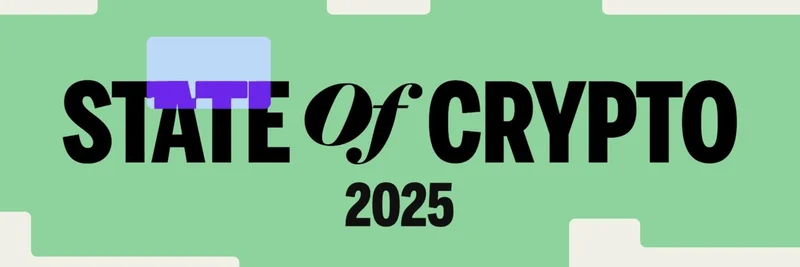If you're into meme tokens and the wild world of crypto, you've probably seen the buzz around a16z's latest State of Crypto report for 2025. Recently, @VaderResearch dropped a handy TL;DR on X (formerly Twitter) that captures the essence in bullet points. Check out the original thread here. As someone who's been deep in the crypto scene, I thought it'd be cool to break it down further, especially zooming in on what this means for memecoins and the broader blockchain ecosystem. Let's dive in with some simple explanations along the way.
The Big Picture: Crypto Hits New Highs
Crypto's total market cap has smashed through $4 trillion this year – that's an all-time high (ATH). To put it in perspective, Bitcoin alone is over half of that, recently peaking above $126,000. But there's still tons of room to grow; for instance, gold's market is about 11 times bigger than Bitcoin's. This growth isn't just hype – it's backed by real adoption from big players in traditional finance (TradFi).
Ethereum, Base (an Ethereum Layer 2), and Solana are leading the pack for developers building on blockchains. These chains offer fast, cheap transactions, making them go-to spots for new projects.
Memecoins: The Launchpad Phenomenon
Here's where it gets exciting for meme token fans. According to the report, a staggering 13 million tokens were launched on memecoin platforms over the past year. That's right – millions of these fun, community-driven coins popping up left and right. Platforms like Pump.fun on Solana have made it super easy to create and trade them, turning memes into quick market plays.
But things are shifting. Launches dropped by 56% from January to September 2025, which the report links to improving regulations. As laws get clearer, the focus might move from pure speculation to more useful blockchain apps. For meme insiders, this could mean fewer rug pulls and more sustainable projects. If you're trading or creating memecoins, keep an eye on how bipartisan support in the U.S. Congress shapes this space – it could open paths for tokens to actually generate revenue for holders.
Stablecoins and Payments: The New Rails
Stablecoins – those crypto tokens pegged to stable assets like the USD – are set to dominate payments. Their supply is over $300 billion now, with Tether and USDC holding most of it. They've processed a mind-blowing $46 trillion in volume this year, up 106%. Adjusted for real economic activity, that's still $9 trillion, nearing levels that rival traditional payment giants.
Why does this matter for memes? Stablecoins make trading memecoins smoother and cheaper on decentralized exchanges (DEXs). Volume is shifting from centralized exchanges (CEXs) to DEXs, especially for perpetual futures (perps) – basically, leveraged bets that never expire. Hyperliquid, a DEX, has handled trillions in trades and raked in over $1 billion in revenue annually.
Institutional Adoption and Real-World Assets
Big money is pouring in. Institutions are snapping up crypto through exchange-traded funds (ETFs) and digital asset treasuries (DATs), holding about 10% of Bitcoin and Ethereum's supply. Companies like BlackRock, Fidelity, and even Visa are jumping on board.
Real-world assets (RWAs) – think tokenizing stocks, bonds, or real estate on the blockchain – have hit $30 billion, up 4x in two years. This bridges crypto with everyday finance, potentially making memecoin profits easier to convert into real-world value.
DePIN (decentralized physical infrastructure networks) is another riser, like Helium providing 5G via community hotspots. It's gaining traction and could inspire meme-like communities around real utilities.
NFTs, Prediction Markets, and Privacy
NFT volumes are at lows compared to 2022 peaks, but more people are buying them monthly, thanks to cheaper chains like Solana. It's shifting from flip-for-profit to actual collecting.
Prediction markets – betting on real events like elections – are booming. Platforms like Polymarket saw volumes jump 5x this year. Memecoins often tie into these, with tokens based on trends or outcomes.
Privacy is huge too. With quantum computing threats, tech like zero-knowledge proofs (ZKPs) and Zcash are in demand. Searches for crypto privacy are spiking, which could protect meme token trades from prying eyes.
AI Meets Crypto: The Next Frontier
Crypto and AI are teaming up. Onchain "proof of humanity" – verifying real people vs. bots – has verified 17 million folks. This could help in meme communities to weed out fake accounts.
Crypto as payment rails for AI agents? Absolutely. Standards like x402 allow tiny transactions for AI to access services. Decentralized compute keeps AI open, countering big tech dominance.
For meme tokens, imagine AI agents trading or creating memes autonomously – crypto could power that economy, potentially worth $30 trillion by 2030.
Regulatory Clarity and the Road Ahead
The U.S. is gearing up for clearer rules on stables and altcoins via acts like GENIUS and CLARITY. Bipartisan support means tokens might soon accrue real value through fees.
Overall, the report paints 2025 as the year crypto went mainstream. For meme token enthusiasts, it's a mix of opportunity and evolution – from launchpad frenzy to integrated, revenue-generating assets.
If you're building or investing in memes, this report is a must-read. Download the full a16z State of Crypto 2025 here. What do you think – is the memecoin boom just getting started, or heading for a pivot? Drop your thoughts in the comments!


